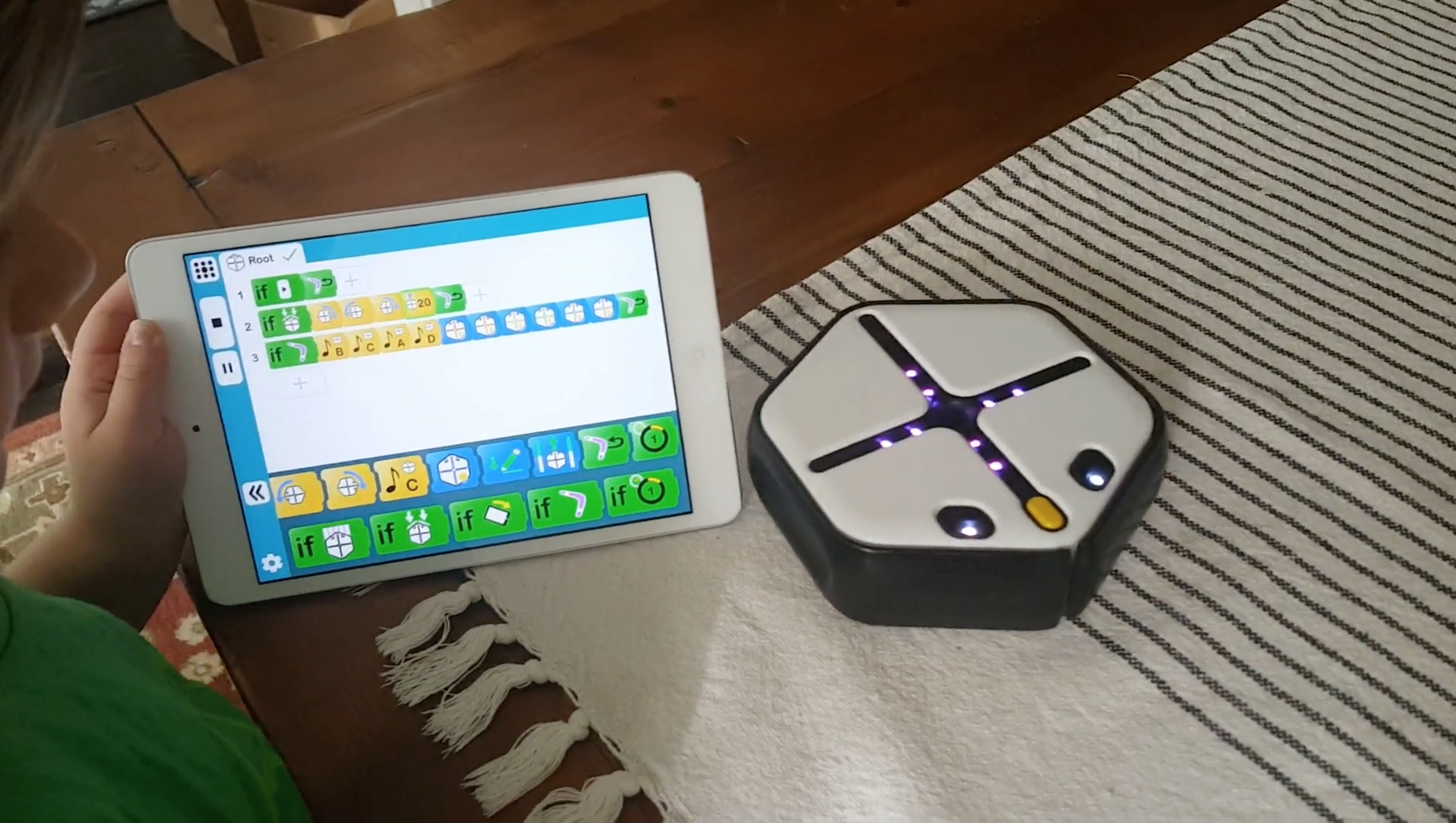This puck-sized robot wants to be your kids' next teacher
Engineers say it will help the next generation of students learn to code


Inside Harvard University's Wyss Institute for Biologically Inspired Learning, engineers pore over everything from vibrating insoles to DNA microscopes. But in Radhika Nagpal's computer engineering group, it's the whiteboards that hum. There, you'll see Root, a small robot that looks like an oversized hexagonal hockey puck. In seeming defiance of gravity, Root glides up and down whiteboards, drawing, erasing, beeping, and flashing — and it could end up changing the way people of all ages learn to code.
"We wanted to design a robot that fits kindergarten through college," says Zivthan Dubrovsky, who runs the Wyss Institute's robotics platform. "Whiteboards are a common denominator for all classrooms — you can just stick a robot on there with zero set-up. It doesn't disrupt a classroom.”
The idea is that students can learn to write programs of varied complexity to direct Root to move, draw, and follow almost infinite combinations of commands, all transmitted via Bluetooth from a tablet. Not only can Root be made to respond to cues like color, light, and touch, it also has LEDs that light up on command and can be programmed to play musical notes. Add a dry-erase marker and Root can draw — ditto for an eraser. Kindergarteners might simply want to make the robot drive, while eighth-graders may choose to maneuver it through a game board or design their own game. (Root affixes to whiteboards via magnet and can also move along horizontal surfaces.)
The Week
Escape your echo chamber. Get the facts behind the news, plus analysis from multiple perspectives.

Sign up for The Week's Free Newsletters
From our morning news briefing to a weekly Good News Newsletter, get the best of The Week delivered directly to your inbox.
From our morning news briefing to a weekly Good News Newsletter, get the best of The Week delivered directly to your inbox.
One of the keys to Root's success is the relationship it promotes with users. “You can have very rich human-robot interactions that are social," says Dubrovsky, who speaks from experience; he came to Harvard's Wyss Institute from iRobot, which is known for the Roomba robotic vacuum cleaner. During his years at iRobot, he noticed that customers consistently named and even decorated their robot vacuums. Root invites that as well — its top can be colored with designs or drawn on to look like a face — and the way it chirps, moves, and blinks further fuels an emotional bond that makes coding even more compelling for would-be coders.
Not that students necessarily know they're coding in the traditional sense. It's hard for a young mind to understand tables and graphs and abstract concepts, says Dubrovsky. But "by bringing in robots, you're giving [kids] the ability to do tangible things at a very young age."
Root pairs with a tablet and can be programmed through a companion app, Square, which lets users code using simple graphical blocks as well as more sophisticated instructions. But more advanced users can also make the tablet talk to Root using Javascript.
The project's goal is lofty indeed. Dubrovsky describes Root as "the robot that's going to empower the next generation of coders." But the means to that end is deceptively pragmatic. Gender- and age-neutral, relatively functional, and inexpensive (when Root goes on sale next year, it will cost around $200), Root turns teachers into coding instructors without expensive training or extensive overhead.
A free daily email with the biggest news stories of the day – and the best features from TheWeek.com
Right now, there aren't that many Roots in the world; its numbers are small because each part is 3D-printed. That will change once the product, which has been in development since 2013, is mass-produced and in classrooms (its creators hope that will happen in 2017 and are accepting pre-orders on their website). Dubrovsky is tasked with turning the Root concept into a startup complete with investors, scale, and delivery that gets Roots in the hands of as many would-be coders as possible.
And that's where the next, even loftier goal kicks in. "Our real vision is to unify the coding movement," says Dubrovsky. "We don't want [our software] to be the only way to program the robot. I don't want the world to think we've solved the only way to learn coding — we want the robot to work with whatever coding platform exists out there. Simple, elegant hardware can unify all of those [coding experiences] into something wonderful."
Erin Blakemore is a journalist from Boulder, Colorado. Her work has appeared in The Washington Post, Time, Smithsonian.com, mental_floss, Popular Science and more.
-
 Political cartoons for December 20
Political cartoons for December 20Cartoons Saturday’s political cartoons include drowning rats, the ACA, and more
-
 5 fairly vain cartoons about Vanity Fair’s interviews with Susie Wiles
5 fairly vain cartoons about Vanity Fair’s interviews with Susie WilesCartoon Artists take on demolition derby, alcoholic personality, and more
-
 Joanna Trollope: novelist who had a No. 1 bestseller with The Rector’s Wife
Joanna Trollope: novelist who had a No. 1 bestseller with The Rector’s WifeIn the Spotlight Trollope found fame with intelligent novels about the dramas and dilemmas of modern women
